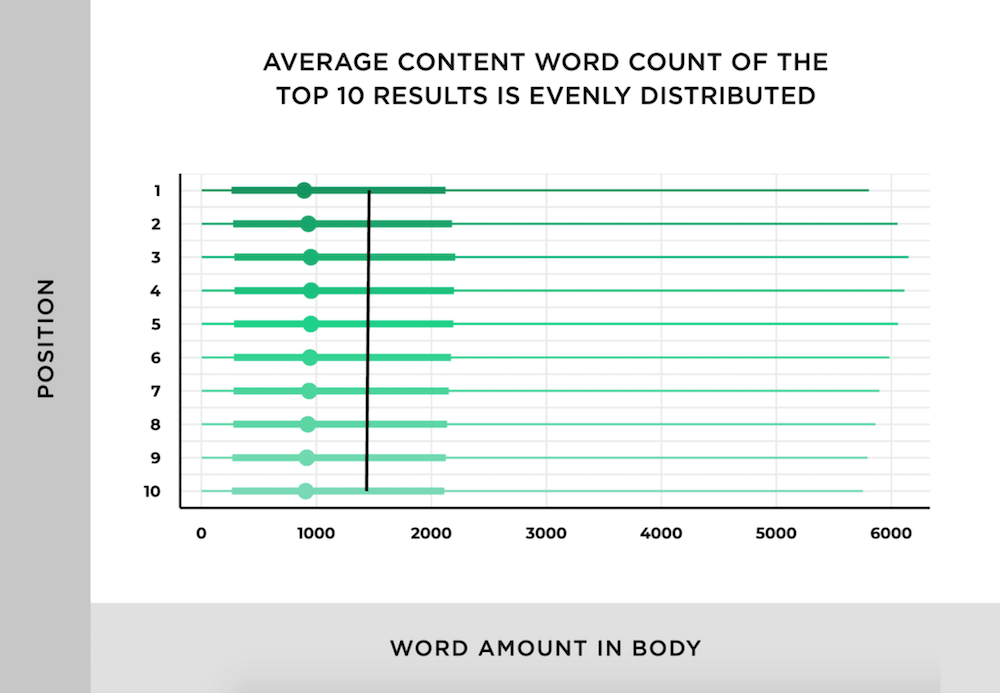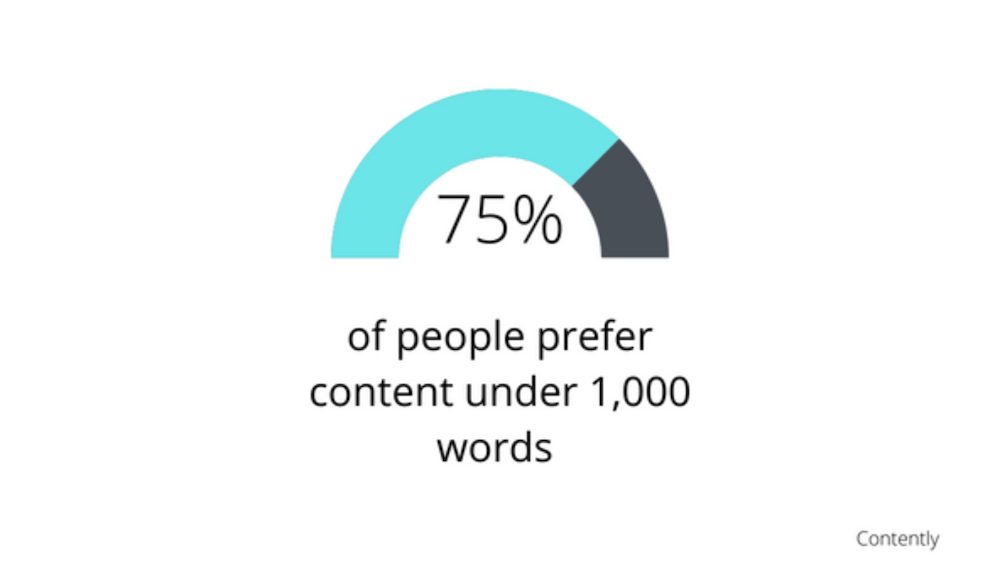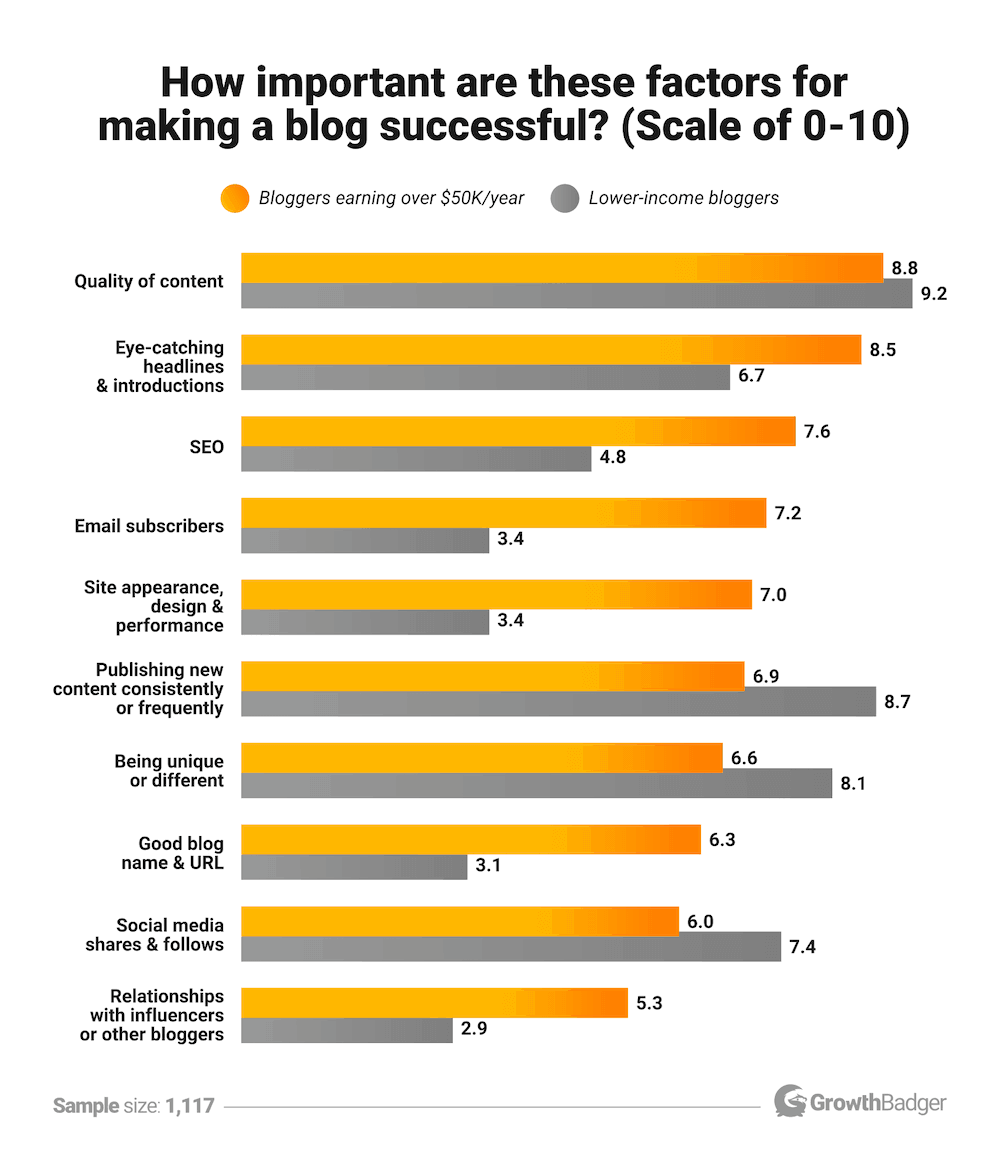Optimal Content SEO Word Count for WordPress

The longer your content’s SEO word count is, the better its ranking potential. Right?
The average first page Google result contains 1,447 words. Some writers use this number as a strict goal, while others strive to produce more. However, achieving an ‘optimal’ word count for SEO rankings is much more complex than you might think.
What is Word Count?
Your word count is simply how many words your content has.
Contrary to popular belief, word count isn’t a ranking factor. The average word count of Google’s top 10 results shows no direct relationship between word count and ranking. But the facts are still this: long-form content typically tends to rank higher on Google. Why?

From higher backlink potential to multiple keyword targeting, long-form content presents more opportunity for SEO strategy implementation.
So, what is the optimal word count? Should you be creating long-form or short-form content? And how can you prioritize creating high-quality content while keeping word count in mind?
Word Count as a Factor for WordPress SEO Ranking
40% of websites use WordPress.
Word count, along with the volume and distribution of headings, blocks, and paragraphs, plays an indirect but essential role in the SEO ranking of WordPress websites.
If you’re using the classic WordPress editor, the word count is displayed at the bottom of the content section. In the Gutenberg editor, you can view your word count by clicking on the ‘i’ icon at the top of the builder.
For deeper insights, you can use the Yoast SEO plugin to check whether your SEO word count is sufficient for the type of content you’re writing.
Long-Form Content vs Short-Form Content

Now let’s take a look at long vs short form content, and while one might be more valuable for your site than the other.
Long-Form Content
Long-form content delves deep into a topic. Common examples include guides, tutorials, case studies, white papers, pillar pages, and in-depth blog posts.
Word Count
The general consensus is that long-form content is above 2,000 words. However, this number can vary by about 1,000 words either way depending on who you ask.
Advantages
- Can put out more links for partnership
Long-form articles provide more external linking opportunities for partnerships. You can nurture partnerships by putting relevant external links within your content. - Can include more necessary information for the content
Increasing your word count gives you more opportunity to explore your topic from various angles and establish yourself as an authority in your niche. - It provides more backlink opportunities
Backlinks are absolutely essential to your SEO strategy and are a top ranking factor for Google. - It offers more opportunities for repurposed content
Long-content is perfect for repurposing. You can turn old blog posts into infographics, ebooks, videos, checklists, podcasts – the possibilities are plenty. - It may increase engagement
The higher your word count, the more information your readers will have to discuss, debate, and relate to. You can identify increased engagement through comments, shares, and mentions.
Disadvantages
- Longer to create
Long-form content takes time to perfect, making it less suitable for intensive growth strategies. - Needs more resources
It’s critical that you have the time, expertise, and up-to-date research to create high-quality long-form content. - Challenging to present using mobile device even with a responsive WordPress theme
Even the most responsive WordPress themes can have trouble displaying long-form content on mobile devices. Consider employing a website designer who is proficient in WordPress development. If you’re a web designer, list your CMS proficiencies in your web design proposal template.
Short-Form Content
Short-form content is quick, easily-digestible content designed to be skimmed. Common examples include short blog posts, news articles, listicles, infographics, and landing pages.
Word Count
Approximately up to 1,000 words.
Advantages
- Easier to create and publish content
Short-form content requires less resources, making it perfect for businesses who want to get their content out fast. - More suited for mobile users
Short-form content is more mobile-friendly. It loads faster, has less blocks of text, and fits better on a smaller screen.
Disadvantages
- Lesser information can be included on the content
Short-form content isn’t compatible with deep-dives. Trying to cover a comprehensive subject in a short-form format can result in poor-quality content. - Lesser opportunity for backlinks
Consumers love short-form content, but businesses – not so much. Other websites are less likely to link to your content if it’s informationally sparse. - Readers might not stay long on the site
If your content is so short that readers can skim it, your page is going to experience high bounce rates. Google looks upon high bounce negatively, reducing your SERP ranking.
What is the Advisable Word Count for High Ranking Content?
The honest answer? It depends.
High-ranking SEO content needs to meet the needs of the user’s search intent. If a user is looking for a quick, how-to guide, that’s what Google will show them. If they’re looking for comprehensive information, they’ll be shown that instead.
So, while long-form content typically ranks higher, it might be pushed down the SERP if it doesn’t meet the needs of its audience.

Put it this way: 75% of people prefer articles under 1,000 words, while only 5% prefer articles over 2,000 words.
How to Write High Quality Content with Ideal Word Count
1. Focus on Following Your Keyword Strategy
How many keywords are you trying to rank for?
There’s going to be a direct correlation between your word count and the volume of keywords you’re targeting. If you’re targeting five or six keywords – or multiple long-tail keywords – your word count will need to be longer to avoid your content reading unnaturally.
2. Factor in Search Intent
You need to determine what your target audience is looking for when they search for your keyword. Are they looking for an extensive informational deep-dive or a quick answer to a question?
Search intent data will significantly influence word count and the value of your content.
Using WordPress’ RESTful API or an API integration platform, you can connect WordPress with your other platforms for better data collection, monitoring, and analysis capabilities.
3. Compare Keyword Stats of Competitors
Analyze the keywords stats of your competitors.
Are they using short or long-tail keywords? What is their content’s SEO word count? Have they missed out any valuable information or do they waffle on too much?
Use this analysis to inform your own content. Maybe you want to add extra information to give readers more value. Or, you might choose to condense your article to appeal to users looking for a quick answer.
If your SEO pricing budget allows for it, you can even employ the help of an SEO specialist who can conduct thorough keyword and competitor research for you.
4. Write Only Original and High-Quality Content
High-quality content is original, engaging, and easy-to-read, meeting the needs of your target audience. Content quality was rated the most important success factor for both high and low-income blogs.

5. Strategize the Use of Headings
Poor content structure might be one of the reasons why your content isn’t ranking on Google.
Headings are a good way to optimize content for search engines and readers alike. Readers use them as signposts to find the specific information they need and/or evaluate whether your content is worth an in-depth read.
If they come across an article without headings, chances are they’ll bounce straight off.
On the same note, heading tags make it easier for search engines to read and understand your content, thus ensuring that it’s shown to the right people.
To improve your content’s readability, break it down into easily-digestible sections. Ensure your headings are distributed properly and relevant to the internal content. If you need some help, Yoast SEO can conduct readability and heading distribution checks.
6. Be as Detailed as Possible When Writing
The amount of detail your content contains depends on the needs of your target audience. SaaS SEO content, for example, might be more detailed and technical than ecommerce retail content. A good rule is to include as much detail as you can during your first draft and later edit for concision.
7. Cite Research and Statistics for Credibility
Citing your research increases the credibility and trustworthiness of your content. And the more trustworthy your content is, the more likely you are to receive backlinks.
8. Remove Unnecessary Sections and Cut Out Fluff
Long-form content should only be long-form if it needs to be. Stuffing your content with unnecessary details in an attempt to increase your word count will only decrease its value.
In fact, Adobe research discovered that wordy content was deemed more annoying to consumers than poorly designed, unoptimized, and impersonal content.
There are lots of WordPress plugins that you can use to increase your readability score as well as your overall SEO. Yoast SEO is a popular favorite, but there are plenty of Yoast SEO alternatives such as Rank Math and All in One SEO.
Is It More Beneficial to Consider Word Count Before Creating Content to Improve SEO Ranking?
Truthfully? Yes – but only a little.
It helps to have a general idea of your target word count in relation to the type of content you’re writing. For example, if you’re creating a listicle, you should have a smaller target word count than if you were planning to write a thought-leadership article. Taking this into consideration will streamline your writing process for SEO ranking purposes.
Your SEO word count is entwined with the success of your essential WordPress SEO strategies. It supports your backlink strategy, authoritative credibility, keyword targeting goals, readability, structure, and overall content quality. Its indirect link to SERP rankings makes it worth considering while creating content.
Ultimately, though, the length of your copy shouldn’t be defined by the latest word count average. If you focus on creating copy that meets your target audience’s needs, you’ll naturally reach the optimal word count for every piece of content you create (and if you were curious, this post that you just read clocks in at 1637 words).



